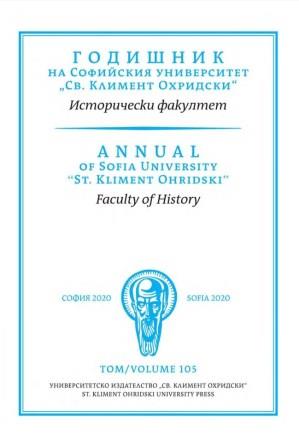Tsar Samuel in the Ideological Concept of the Ohrid Archbishopric Tradition and Invention (11th-17 century)
Tsar Samuel in the Ideological Concept of the Ohrid Archbishopric Tradition and Invention (11th-17 century)
Author(s): Mitko PanovSubject(s): Christian Theology and Religion, History, History of Church(es), Political history, Middle Ages, Modern Age, Theology and Religion, 6th to 12th Centuries, 13th to 14th Centuries, 15th Century, 16th Century, 17th Century, Eastern Orthodoxy
Published by: Софийски университет »Св. Климент Охридски«
Keywords: Tsar Samuel; Ohrid Archbishopric; Basil II’s three imperial charters (sigillia)
Summary/Abstract: The paper treats the issue on the reconstruction of the image of Tsar Samuel from the perspective of the Ohrid Archbishopric. The snapshots from the sources starting from Basil II’s sigillia and other official acts, reveals that the representation of Samuel was largely shaped in accordance with the ideological concept of the Ohrid Archbishopric. Depending on the political constellation and the momentary aims of the ideological propaganda, Samuel was either recognized as the fundamental ruler and inseparable part of the traditions of the Ohrid Archbishopric, or was completely excluded within the constructed theories about the origin оf the Archbishopric. The leading people in the Ohrid Archbishopric constantly modified and constructed the ecclesiastical traditions for the purpose of reinforcing the position and the status of the Archbishopric, in which the Christian saints were also exploited. This tendency also found reflection in the alteration of the original legend about Vladimir and Kosara, that served Archbishopric’s pretensions for obtaining the leading role among the Orthodox Christians in the Balkans. Hence, from the reading of the official works composed for or from the Ohrid Archbishopric we can notice the tendency for adapting, constructing and manipulating the traditions emerging from Samuel’s political and ideological program, that involved the cults and legends originating in Prespa and Ohrid, wherefrom we receive opposed and distorted images of Samuel. Their deconstruction is the main goal of this paper.
Journal: Годишник на Софийския университет „Св. Климент Охридски“ – Исторически факултет
- Issue Year: 105/2023
- Issue No: 1
- Page Range: 49-63
- Page Count: 15
- Language: English

